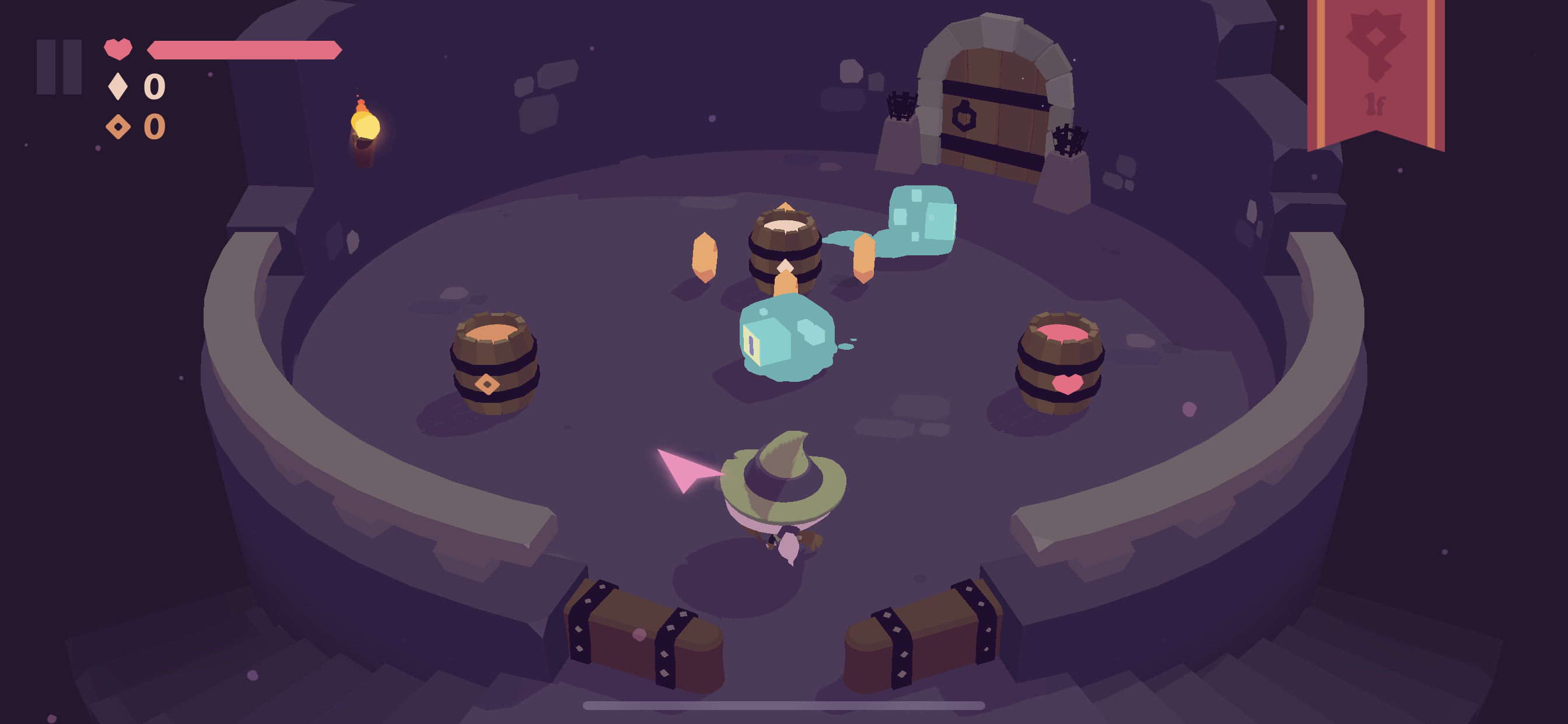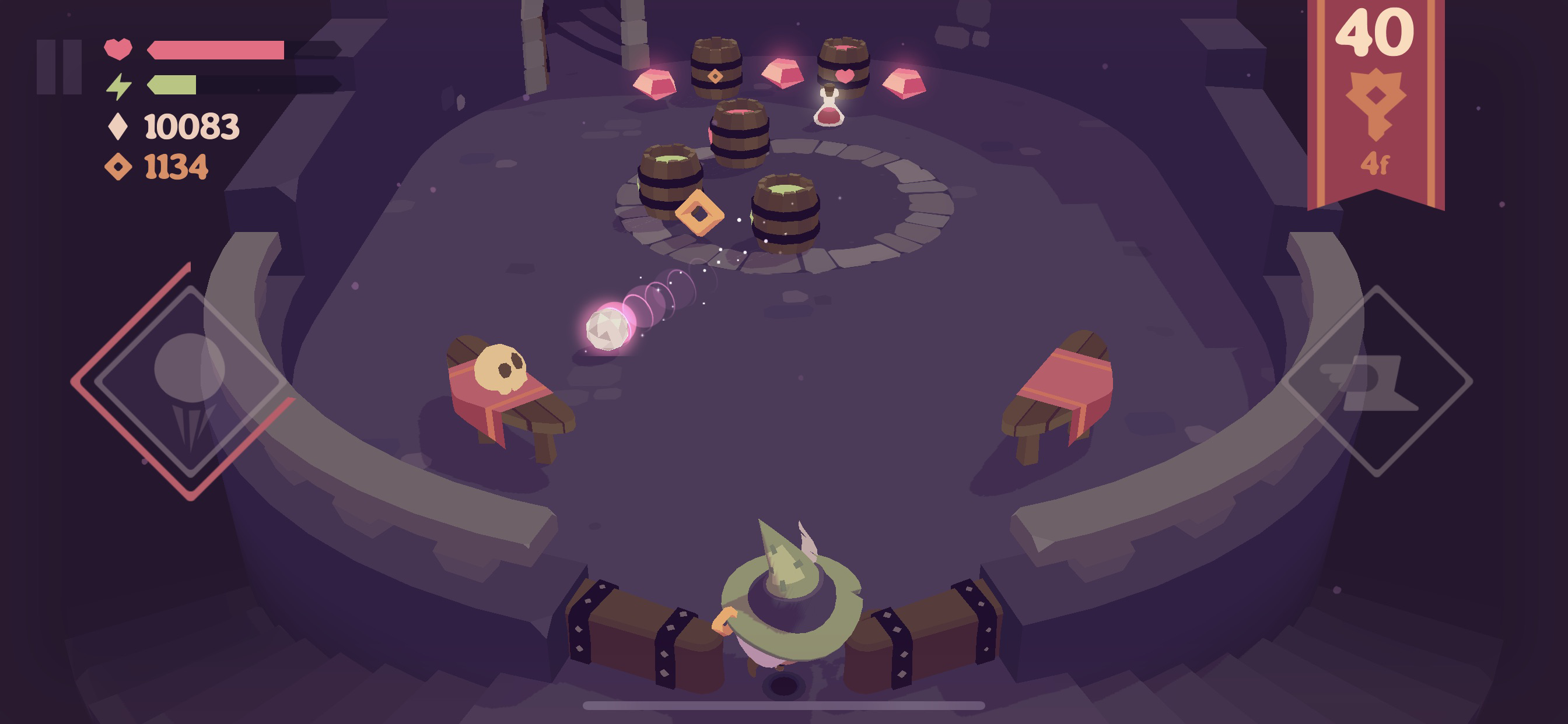Every so often, a video game developer decides to mix pinball with some other genre, franchise, or twist that turns the idea on its head. It’s a long-standing tradition that includes games like Sonic Spinball and Metroid Prime Pinball, and it dates as far back as the 1970s with Namco’s Gee Bee.
While this sometimes results in amazing games, like the 2018 Yoku’s Island Express, most examples end up as mediocre mash-ups that only gain attention if they’re tied to some beloved character.
The Pinball Wizard (), a mash-up of pinball and dungeon crawling, doesn’t have the luxury of a recognizable franchise tied to its name. However, while it doesn’t achieve the heights of some of the better pinball mashups, it does provide an entertaining, if imperfect, bit of amusement.
The game has a solid foundation and developer Frosty Pop deserves applause for bringing it to fruition in a way that feels intuitive and satisfying. The basics don’t take long to figure out: knock a wizard around using pinball paddles, hit enemies to hurt them, avoid enemy attacks, gather treasure, and find the key on each level to open the door to the next one. Rinse and repeat until you reach the top of the tower, defeat the end boss, and save the day.

The game’s simple graphics are pleasing to the eye, and help aid in the game’s easy-to-pick-up style. How everything in the game works is clear from the moment you lay eyes on it, which speaks well for the artistic direction.
One interesting design choice was to not make the titular wizard look much like a ball. Instead of rolling around the tables, he just kind of hustles around like he’s going for a morning jog, taking paths and speeds that just happen to be the same as how a ball would act when ricocheting off objects on a sloped surface. It sets an off-kilter tone that works quite well for the premise, and the sight of a wizard sprinting face-first into enemies ends up being far more amusing than if he were rolling into everything.
When you die, you have to start back at the last tower entrance you unlocked. For the first few hours of play, this will mean starting back at the very beginning of the game. Dungeon crawlers require progression systems, after all, which means that your character starts out weak, fragile and powerless — ready to die from any angry blob that looks at you funny.
New skills come from gaining experience, and these skills can be upgraded with treasure, but even your ability to collect these things is hindered at the beginning. Upgrades that give you treasure multipliers or increased experience aren’t unlocked until much later in the game, meaning that you have to grind for a while before leveling up becomes a regular occurrence.

The early upgrades do a lot to mix up how the game works — the ability to dash in a chosen direction, shoot out a magical pinball, and recover health by hitting enemies all provide new and interesting choices about how to approach each level. However, the further you progress, the less-interesting the upgrades get. At the end, you’re just increasing your health, energy, and the amount of treasure and experience you get.
Unfortunately, many things about the game lack variety and imagination. Very few of the levels offer interesting layouts or obstacles, instead repeating the same basic structures with differing enemy, item, and paddle locations. This wouldn’t be so bad if there were a lot of different enemy types, but there are only four enemies in the entire game. These enemies are all well-thought-out and require their own unique approaches to defeat, but you can only hit a bomb back at a bat so many times before it becomes tiresome.
On top of this, the game has only one tile set, meaning every level looks the same, and only a single boss that’s pretty directly lifted from the Legend of Zelda series.
Defeating this end boss unlocks a power that gives players extra experience, helping players unlock the rest of the skill tree at a breakneck pace. Unfortunately, if my experience is anything to go by, many players will have already unlocked most of the skills by the time they defeat the end boss.
The game does convert experience to gold once all the skills have been unlocked, helping players power up their skills faster, but beating the levels becomes trivially easy long before you reach full power, limiting how engaging the game is to replay.
One the whole, The Pinball Wizard is a solid game that is in desperate need of more. It needs more layouts, more enemies, more obstacles, more powers, more bosses, more locations, and more reasons to keep coming back. Anyone who subscribes to Apple Arcade and likes the idea of a pinball dungeon crawler will find exactly what they’re looking for. It succeeds at being an entertaining diversion, but it could have been more than that.
We pride ourselves on delivering quality, long-form articles like this one instead of the SEO-driven click bait that is slowly taking over the internet. Unfortunately, articles like these rarely generate the traffic (and as a result, the ad revenue) of listicles, cheat guides, and other junk.
Please help us continue producing content like this by supporting TouchArcade on Patreon, doing your Amazon shopping by first visiting toucharcade.com/amazon, and/or making one-time contributions via PayPal.
NOTE: The Pinball Wizard is available on mobile exclusively as part of Apple Arcade, a premium gaming subscription service from Apple. Without being a subscriber to Apple Arcade you cannot download and play this game. Apple Arcade is $4.99 per month and does come with a free one month trial, you can learn more about it on Apple’s official website or by visiting our dedicated Apple Arcade forum.
